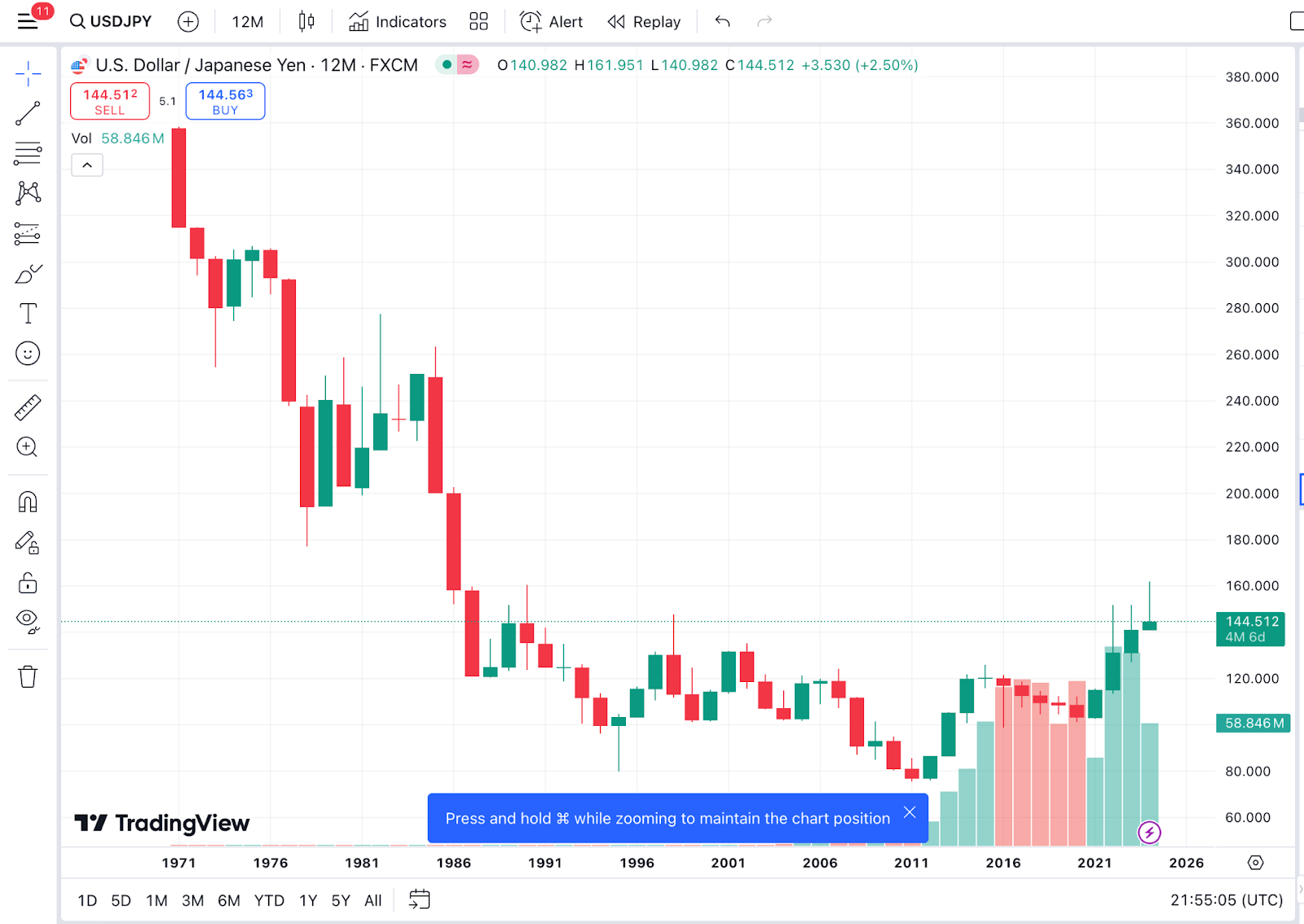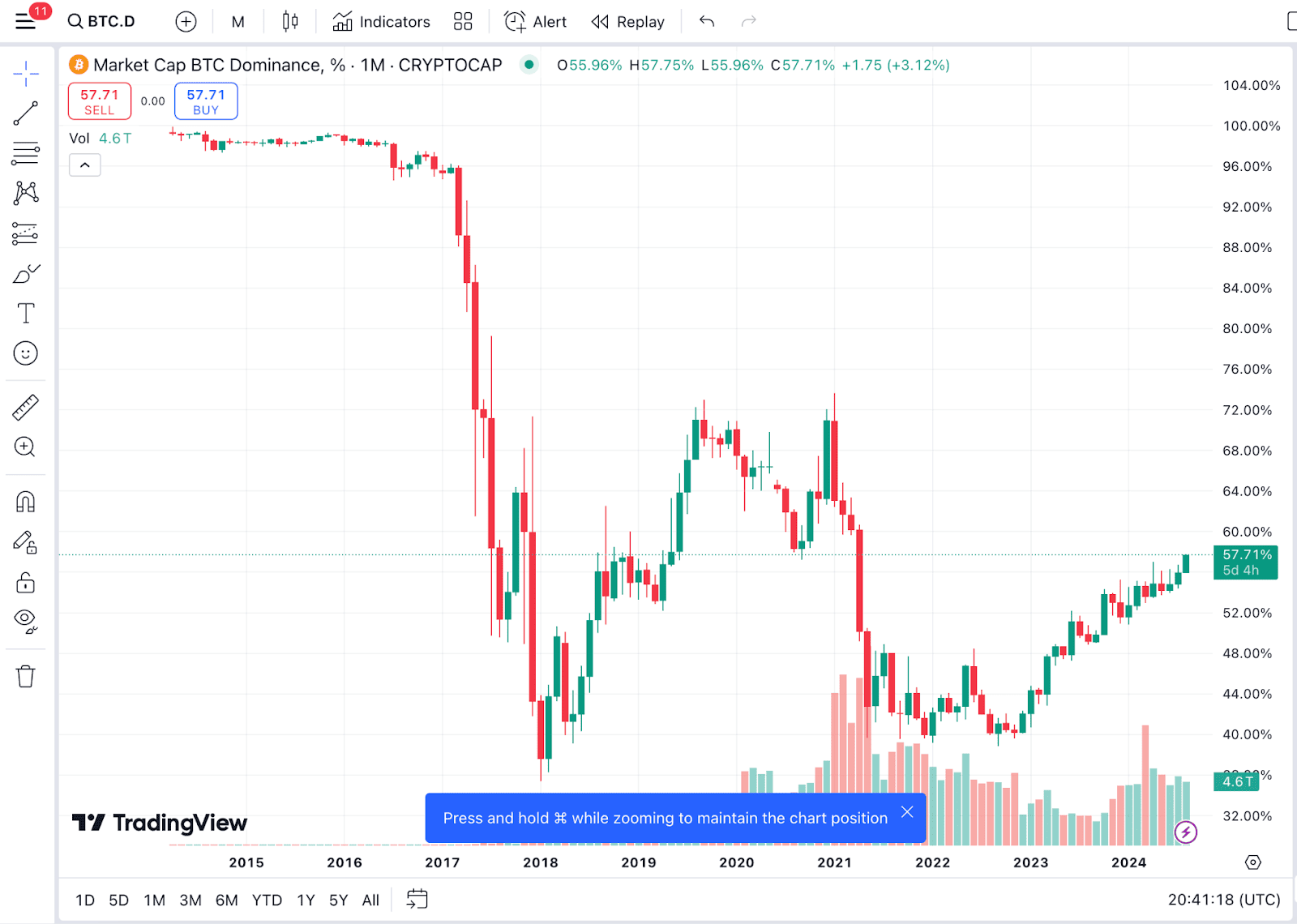|
Getting your Trinity Audio player ready...
|
In the world of investing, there is a fundamental premise: the belief that you are ahead of the curve, betting on the future value that will be created by the asset you choose to back. Whether it’s shares in a defense contractor like Lockheed Martin or Raytheon, anticipating a rise in global conflict, or a stake in a green energy company poised to benefit from upcoming government subsidies in solar or electric vehicles, investments are always about speculation—about being early to the party.
And that party is business—or more generally, you could call the party “productivity.”
Investors speculate on future utility, placing their chips on assets they believe will outperform because of the value they can generate, directly tied to productivity or innovation toward future productivity of what can be built with their capital.
This logic underpins investments in everything from company stocks to bonds or foreign currencies. Consider Forex trading: you might go long on the Japanese Yen against the U.S. dollar, understanding that because the Yen is near historic lows against the U.S. dollar, Japan holds significant U.S. bonds and boasts a high rate of productivity, making it a strong bet in the long term. Is it possible that the Japanese economy is underestimated? It’s not a guarantee, but sure, Japan is a wealthy, industrialized nation full of well-educated and hard-working people.

If Japan is being bet against at absurd levels, it is undoubtedly worth scooping up some Yen and waiting for the next wave of economic productivity to come in from the East over the long-term.
Conversely, shorting overvalued currencies against the dollar might make sense if you believe that a central bank is flooding the market with money that is unlikely to translate into productivity gains. I have been stating this about the BRICS currency for a while. I think, despite the might of Russia, China, and other BRICS nations, there is an ingredient that very few people are talking about. Russia and China lack long-term trust, and it will take a long time for them to earn that trust, so it is unlikely that there will be a rapid flippening between U.S. Dollar and BRICS Dollar dominance around the world.
In short, people just don’t want to keep a bunch of wealth in Russian or Chinese money.
Of course, I am speculating with my rhetoric here, but these are examples of rational investment thought processes in businesses and currencies—predicates to decisions that could be made based on the anticipation of real-world performance driven by economic productivity.
A little history
The first company to issue stock was the Dutch East India Company, known in Dutch as the Vereenigde Oostindische Compagnie (VOC). Founded in 1602, the VOC is widely recognized as the first publicly traded company, and it issued the world’s first shares of stock when the East and West were first beginning to connect the first routes of modern global commerce.

They had a monopoly on things like tea and silk, and other items created in the East but consumed in the West but had a lot of systemic risk in operations.
Their ventures required significant capital for ships, crew, and supplies and carried high risks of loss due to dangers like shipwrecks, piracy, and hostile encounters. The costs and risks were too great for individual merchants to bear. By issuing shares of stock, the VOC was able to pool resources from a large number of investors, spreading the financial risk across many people rather than a few. This structure allowed the VOC to raise the necessary capital for long-term operations, build a sustainable trading network, and maintain a continuous presence in Asia. Investors were incentivized by the potential for high returns from the lucrative spice trade, making stock ownership in the VOC attractive. This innovation not only enabled the VOC to thrive but also laid the groundwork for modern corporations and stock markets by creating a system where risk and reward were shared among many rather than concentrated in the hands of a few.
VOC stock ended up being such a powerful financial vehicle that if you trace the history of the company forward in time, there is a curious connection about how it essentially became a consulting firm hired to manage nation-states, and there is an argument to be made that the United States government is some mutated iteration of that company’s corporate structure today. The discussion on that is out of scope for this article, but British Admiralty law, colonial law, national bankruptcies, central banking, and ultimately U.S. governance as a corporate entity rather than a royal or parliamentary system is a fascinating tangent if you’re so inclined.

The BTC conundrum
It’s been asked in many musings before, but “Is this a Bitcoin article, Kurt?”
Yes. Yes, it is.
Let’s contrast the discussion of company or national productivity investment with the current state of investment in the BTC Core blockchain (BTC). The prevailing narrative around BTC is less about the future utility of the system or the network, or the businesses that they can disrupt, but far more about the scarcity of the underlying asset. “It’s scarce, and therefore, it will be more valuable in the future,” its proponents argue. But when pressed on why this will be the case, the answer often boils down to circular reasoning: “Because it will.”
It doesn’t necessarily disrupt any existing system, asset, or business. It is just an add-on to “hold” in addition to whatever productivity is occurring elsewhere in the system that is totally insulated from BTC.
If pressed harder for logic on why BTC is disruptive, it isn’t uncommon to see responses like “Short it then!” or “Have fun staying poor.”
Fun…
Have fun staying poor, Jamie. #BTC pic.twitter.com/7jAqVQFts3
— The ₿itcoin Therapist (@TheBTCTherapist) December 6, 2023
This type of speculation—betting on price rather than utility—was one of the issues at the heart of the Bitcoin Civil War. This schism fundamentally divided the Bitcoin community. What is BTC’s future utility? The answer from its advocates is often vague, centering on the idea that institutional players like CME, CBOE, and BlackRock will continue to trade it. Occasionally, there’s a nod to the Lightning Network, with promises that it will revolutionize payments “in 18 months.” However, these claims are thin, offering little concrete, scalable utility for BTC as a medium of exchange, which was Satoshi Nakamoto’s original vision for Bitcoin.
This focus on price rather than utility is one reason why BTC has lost market share to other blockchains since the 2017 conclusion of the schism portion of the war, which created a massive diaspora of developers and entrepreneurs abandoning BTC and starting other projects.

While many other blockchains may only pay lip service to the idea of utility beyond price, they at least acknowledge that investment should be based on speculation about future productive use cases. On the other hand, BTC has increasingly become a game of greater fool theory—where the value lies in finding someone else willing to pay more for it than you did.
The rational bet on BSV
For the sake of discussion, let’s entertain the notion that BTC’s primary utility is indeed its scarcity and that it is not supposed to be anything except scarce. Suppose BlackRock, the largest investment firm in the world, and the U.S. government, one of the largest holders of BTC, have already entered the game—because they have.
Since these entities already control significant portions of the supply, where will additional liquidity come from? Who will be the buyers when these giants decide to sell? If the largest holders of BTC already have their fill, there’s little rational incentive for them to acquire more unless new buyers can be found—buyers who are increasingly hard to come by as the price escalates.
This brings us to the rationality of investing in the BSV Blockchain (BSV). BSV represents a bet on Bitcoin’s original purpose—the idea that Bitcoin was always a good idea, but its potential has been misunderstood and underestimated by the market. The market may currently overlook the value of frictionless global cash, secure identity, and data integrity solutions on a distributed ledger that can scale. But consider this: out of the 20,000 blockchains that exist, how many can scale to handle global commerce? How many can serve as programmable money capable of supporting novel use cases beyond simple transactions?
The answer, as it stands, is just one: BSV.
Despite the market’s current disinterest, BSV investors may be early adopters of a technology poised to revolutionize global commerce. If Bitcoin’s true potential lies in its utility as a scalable, programmable, and universally accessible money, then BSV, not BTC, is the real paradigm shift waiting to happen.
The bottom line
Investing is about more than just riding the wave of hype.
It’s about understanding the fundamentals, anticipating future utility, recognizing when you might be early to something revolutionary, and helping create value in a ripe economy. You have to invest in where the economy is going, not where it is.
BTC’s current trajectory suggests that its value is driven by scarcity and speculation, but with little in the way of concrete utility, where can it go? In contrast, BSV offers a return to Bitcoin’s mostly unfertilized roots—a focus on creating value through real-world use cases that can scale globally and increase the productivity of its users.
As we navigate the endless blockchain hype and investment cycles, it’s crucial to ask ourselves what we’re really investing in. Are we betting on scarcity for scarcity’s sake or the meme of the week, or are we backing technology that can fundamentally change the way the world does business?
It has been said that the most dangerous phrase in business is “because we’ve always done it that way.” The same applies to investing. Don’t get caught up in the inertia of the status quo. Look for the next big shift, the one that’s quietly building its foundation while everyone else is focused on the latest trend.
BSV might just be that shift—a bet on the real utility of Bitcoin that everyone else is missing, but it might also be the thing calling you to stop thinking of blockchain assets as passive investments at all. The thing that might need investment is in building businesses that utilize the technology in an active investment of time, money, and sweat equity, which turns the opportunity into more than something you can hold in a digital wallet. It turns the conversation into an investment in industrious people, big ideas, and productivity!
And remember, the future belongs to those who don’t just follow the herd but lead the way to where the herd hasn’t yet looked.
This is not investment advice. OG bitcoin investors have inherent exposure to BTC, BCH, BSV, and numerous other assets that have been airdropped to private key holders of Bitcoin, so it is important to understand that while investment influencers may tell you to buy the popular thing, their own portfolios are hedged against many outcomes by virtue of the fact that many of them are longtime holders of all assets by de facto.
Act accordingly.
Watch: Creating value on a scalable blockchain

 07-12-2025
07-12-2025 





